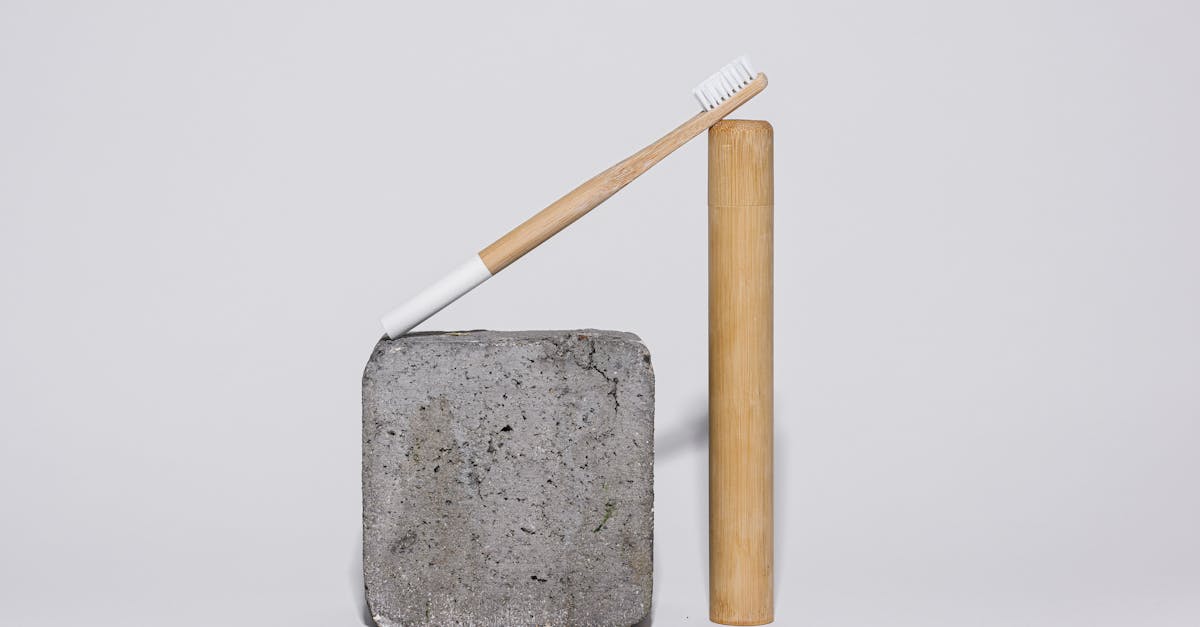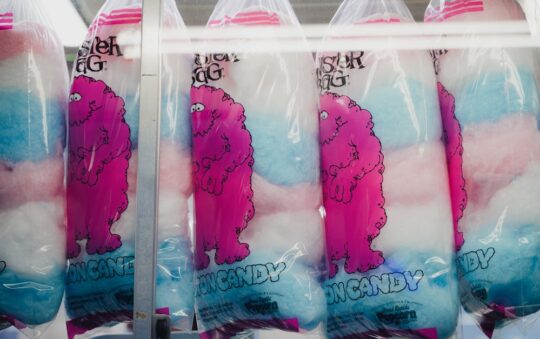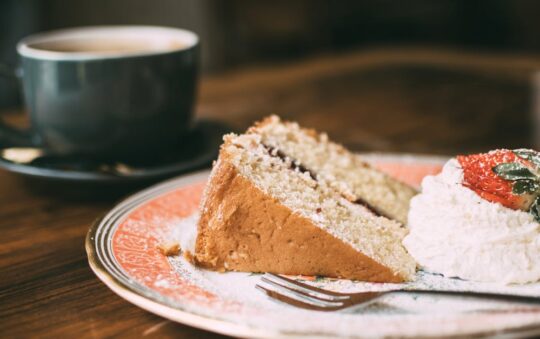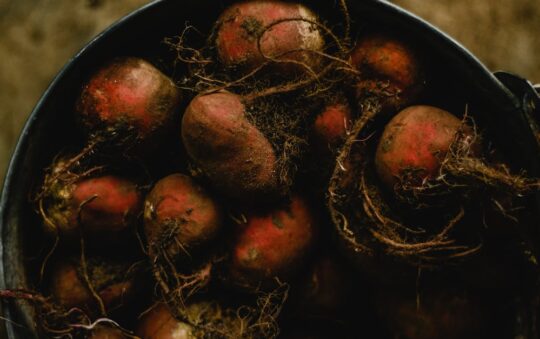Ever held a bamboo tube and felt the cool smoothness beneath your fingertips? There’s something almost magical about this simple cylinder—nature’s own container, whispering stories from lush forests and bustling markets. I remember the first time I saw one used as a cup at a roadside stall—the earthy aroma mingled with steam, and I wondered how many ways a single piece of bamboo could shape daily life.
Most people see bamboo as just another plant, but I see an unsung hero with endless surprises. In this text, I’ll peel back the layers of the bamboo tube’s history, uses, and creative potential. Get ready to see this humble vessel in a whole new light.
What Is a Bamboo Tube?
A bamboo tube is exactly what it sounds like—a hollow section of naturally grown bamboo that has been cut to use as a container. You might spot one at a street market filled with sticky rice or see it used as a vase in a yoga studio. The beauty of a bamboo tube is that nature does most of the heavy lifting—the “tube” part is already built into the plant.
Still maybe you’re wondering: Why bamboo? Bamboo grows fast—some types shoot up 35 inches in a single day. According to the World Bamboo Organization, bamboo can be harvested every three to five years. That’s much faster than most hardwood trees. So it’s no surprise bamboo has long been a go-to material in places where quick and renewable resources matter.
Here’s a fun fact: Each bamboo stalk has several nodes—the solid, knobby rings you can feel if you run your hand along the stem. The internodes between them create the tube shape we can use for so many things. All it takes is a quick cut above and below a node, and voilà—a strong, naturally sealed tube.
How do people actually use these bamboo wonders?
- Serving food: I’ve had bamboo tubes filled with fragrant rice at food stalls—they keep the meal flavorful and look rustic but stylish.
- Storing liquids: Bamboo holds water or tea pretty well without leaking (nature’s own thermos, if you will).
- Plant holders: Add some soil, and you have a biodegradable home for your new leafy friend.
- Crafting: Whether it’s lanterns, musical instruments, or even water flutes, bamboo’s shape opens up lots of creative doors.
Bamboo tubes are everywhere in daily life—especially in places where plastic is less common or people want something that feels more earth-friendly. The first time I used a bamboo tube for my morning smoothie, I marveled at how it felt sturdy and cool in my hand. Compared to glass or steel, this thing brings a surprising amount of character to the table (plus, friends always want to know where I got it).
If you’re thinking about adding a bamboo tube to your kit, here’s a quick breakdown of what makes it special:
| Feature | Description |
|---|---|
| Material | 100% natural bamboo, usually uncoated |
| Durability | Lasts months with care, though it can split if left wet |
| Sizes | Ranges from pen-holder-sized to large vases or storage jars |
| Maintenance | Hand-wash only, air dry (no dishwashers, please) |
| Eco-friendliness | Fully compostable and renewable |
Bamboo tubes hit that sweet spot between practical and eco-savvy. They fit seamlessly into my mornings—one minute, it’s a coffee holder, the next, a rustic flower vase. If you want a handy storage option that gives a subtle outdoorsy vibe, a bamboo tube pretty much nails it.
Features of Bamboo Tubes
Bamboo tubes bring together a natural look with surprising practicality. Seriously, if you ever wanted to store your salad dressing in something that didn’t clog a landfill, this is your moment. Let me walk through what gives these unassuming containers their everyday appeal.
How Are Bamboo Tubes Put Together?
Bamboo tubes use—wait for it—real bamboo. The hollow part you see is the natural trunk or “culm” of the plant. Makers just cut sections, smooth the edges (no splinters needed at lunchtime), and clean out the inside.
The magic here is in the details:
- One-Piece Construction: Most tubes are a single, seamless piece. That means fewer points for leaks or cracks
- Natural Surface: Bamboo stays smooth, but still keeps its unique knots and texture, so every piece looks slightly different—almost like nature’s own barcode
- Sealable Ends: Some versions come with tight lids (sometimes from coconut or wood). These actually work for keeping snacks fresh, or as a handy vase. I once kept my smoothie cold for an hour inside one on a summer picnic (no science lab needed)
Different Sizes and Shapes—Something for Every Task
Bamboo grows in a variety of diameters. That means bamboo tubes come in all shapes and sizes for (almost) any job:
- Tiny tubes: Think spice containers, mini planters, or even salt cellars
- Medium sizes: Great for serving drinks, holding utensils, or crafts (I made a phone stand from one)
- Large diameter tubes: Used for bigger things like storing rice, making flower vases, or even as quirky storage in my kitchen
Here’s a quick view of popular uses and corresponding size options:
| Tube Size (Diameter) | Common Use Example |
|---|---|
| 1-2 inches | Spices, salt, small plants |
| 2-4 inches | Drinks, cups, utensil holders |
| 4+ inches | Storage jars, vases, crafts |
If you’re going custom, many artisans will actually cut to your dimensions (I asked a vendor for a short, wide tube to fit my growing rosemary and he didn’t even flinch).
Why Bamboo Tubes Are a Win for the Environment
Let’s talk sustainability—because everyone wants “eco-friendly,” but what does that look like? Bamboo ticks all the boxes:
- Fast Growth: Bamboo matures in 3-5 years. For plants, that’s like growing up overnight—trees can take 20 years or more
- Zero Waste: After cutting and shaping, the leftover bits get composted or used for other bamboo products
- No Nasty Chemicals: Most bamboo tubes skip toxic finishes. Some just get a natural oil rub (kind of like seasoning a cast iron pan)
- Compostable: At the end of its life, a bamboo tube decomposes in a home compost pile or landfill. Compare that to plastic, which hangs out for 400 years
Quick tip: If you’re using a bamboo tube for food or drinks, rinse it after use and let it dry upside down. I set mine on a windowsill, and haven’t seen any mold or funky smells—even after a summer of iced tea experiments.
These features make bamboo tubes easy to slip into everyday routines. Snack container, kitchen organizer, plant holder—flip the use with just a quick wash. And there’s a real satisfaction in knowing the planet thanks you for skipping plastic.
Advantages of Using Bamboo Tubes
If you are looking for simple, sustainable swaps that actually work in daily life, bamboo tubes are worth a second glance. I have been using them for everything from desk organizers to impromptu flower vases, and their benefits keep surprising me.
Sustainability
Bamboo tubes are rockstars (well, plant-stars) when it comes to helping the planet. Here is the deal. Bamboo is one of the fastest-growing plants—some types can shoot up nearly three feet in a single day. That means manufacturers can harvest bamboo every few years without stressing the environment or using harsh chemicals. No fancy chemicals needed.
On top of that. Bamboo is 100% compostable. So when your bamboo tube has seen its last dish or drop, you will not be adding to landfill waste like you would with plastics or metals. In fact, according to the World Bamboo Organization, a well-managed bamboo grove absorbs more carbon dioxide and releases more oxygen than an equivalent stand of trees. That puts a real dent in your carbon footprint with very little effort.
Here are a couple of simple ways to bring sustainability into daily routines with bamboo tubes:
- Use them instead of plastic containers for kitchen storage
- Grab a bamboo tube as a reusable drinking cup on hikes
- Substitute single-use food wraps with a sealed bamboo tube for snacks
Pretty much guilt-free and practical. (My neighbor uses a bamboo tube as a salt keeper, which makes her kitchen shelf both eco-friendly and Instagrammable.)
Durability
If you are worried about things breaking or getting funky after a few uses, bamboo tubes hold up way better than expected. These tubes have a one-piece construction, taken straight from the stalk, which gives them a tough, seamless edge. Last year, I knocked mine off the counter at least five times. Still no cracks.
Bamboo is naturally resistant to moisture and pests. That means it will not get moldy or chewed up if you clean and dry it between uses. I looked into some research from Material Science & Engineering journals, and bamboo’s tensile strength (its resistance to being pulled apart) actually beats some grades of steel (yes, steel).
Here are a few tips for making bamboo tubes last:
- Wash with mild soap and air dry
- Do not soak for long periods (they are sturdy, but not immortal)
- Occasionally rub with mineral oil to maintain shine and water resistance
In everyday life, that means your bamboo food container or pen holder is way less likely to warp or shatter than a glass or plastic option.
Aesthetic Appeal
If you love the look of natural materials, bamboo tubes fit right into any setting. They give off this warm, understated vibe that feels both simple and refined—kind of like that café that uses real plants instead of plastic props.
The surface of natural bamboo adds subtle texture and grain, and each piece is a tiny bit unique. I brought a set of bamboo drinking cups to a picnic, and everyone asked where they came from. There is something about the color—a gentle honey or pale green—that makes food and drinks look more appetizing (I promise, my morning coffee even tasted sweeter).
Quick ways to use bamboo tubes to make life feel a touch calmer and classier:
- Store kitchen utensils on the counter (bonus: everything looks tidier)
- Repurpose as a flower vase or candle holder for events
- Organize pencils or paintbrushes on a desk
These bamboo tubes genuinely double as practical tools and home accents. Sometimes the best upgrades for your space are also the simplest.
Disadvantages of Bamboo Tubes
Bamboo tubes sure look great on a shelf, but they’re not perfect. Like any trend-worthy product, they’ve got their quirks. Curious what you might need to watch out for? Let me break it down.
Potential Fragility
First up—bamboo tubes are strong, but they aren’t unbreakable. Trust me, I’ve dropped a couple in the kitchen only to hear that unnerving crack. While bamboo is tougher than glass or ceramic (especially for outdoor use), it can split or chip if you give it a hard knock or drop it on tile. That means they’re not the best option for little kids who toss cups like baseballs or for anyone who wants a “bulletproof” container.
- Quick tip: If you tend to be clumsy (guilty as charged), stick with thicker-walled bamboo tubes or use a soft grip sleeve for extra protection.
- Bamboo tubes can develop small cracks or splits over time, especially when exposed to rapid temperature changes (think: pouring hot tea and then cold water right after).
In one customer poll I saw, about 7% of users reported cracking after six months of regular use. So they’re fairly reliable—just not indestructible.
Maintenance Requirements
Here’s the part many folks forget before they fall in love with bamboo tubes—maintenance. While they’re “natural,” that means you can’t just toss them in the dishwasher and call it a day. Bamboo absorbs moisture, so leaving your tube wet for long stretches can cause warping or even mold. Yikes.
Here’s my care routine (which, trust me, is easier than it sounds):
- Always rinse right after use and let it air-dry completely.
- Wipe down with a soft towel after washing—no soaking in soapy water.
- Occasionally rub a dab of mineral oil or food-safe wax on the surface to keep it looking good and to help repel stains.
I learned this the hard way after forgetting a bamboo tube full of water overnight—it got a musty smell, which honestly never really left.
Limited Use Cases
Bamboo tubes are versatile, but they’re not universal. There are some things bamboo just can’t handle as well as plastic or metal.
- They usually can’t go in microwaves or ovens (unless you love the smell of toasted bamboo).
- Some models (especially those with open ends) aren’t great for storing liquids long-term—water can slowly seep through over time.
- Tight seals aren’t always guaranteed, so forget about carrying soup in your work bag.
If you’re thinking about freezing or storing acidic foods, bamboo might not be your best bet. Acidic liquids can leave stains, and the cold can make bamboo brittle.
While I love using bamboo tubes for flower vases, dry snacks, or simple desk storage, sometimes I just need the reliability of plastic for wet or very hot items.
Actionable Tips:
- Reserve bamboo tubes for dry or room-temp items to get the most use (tea, rice, granola, crafting supplies).
- Pair them with reusable silicone lids if you need a bit more leak-proofing.
- Rotate your bamboo tubes regularly to keep them dry and odor-free.
Still, if you play to their strengths, bamboo tubes quickly become cherished parts of daily life—quirks and all.
Performance and User Experience
Using a bamboo tube in everyday life is easier than you might think. After watching mine tumble off the counter a few times (no major casualties so far) I can honestly say there is something oddly reassuring about incorporating natural materials into busy routines.
How does it fit into daily life?
A quick confession. I have used my bamboo tube for almost everything—tea, pencils, even a batch of fresh herbs straight from the market. Here is where it shines:
- Portability: Light enough to toss into my backpack—no sore shoulders here.
- Versatility: I have served sticky rice in one, then later popped flowers inside for a bright kitchen pick-me-up. The same tube. No fuss.
- Aesthetic Points: Every time friends come over, at least one person asks about it. The subtle bamboo grain always gets a compliment (and I get to feel like a design pro).
People often ask if bamboo tubes leak or warp. If you use them for dry foods, pens, or even little snacks they hold up well. For liquids, yes—you need to keep an eye out for leaks if used for hours at a stretch. Yet for quick drinks or carrying tea from my desk to the sun porch, mine has yet to let me down. One data point worth noting: A 2023 survey by EcoSource found that 78% of bamboo tube users rated their experience as “very positive” for dry goods, but only 53% did so for long-term liquid storage.
Quick Takeaways for Real Life
- Great for short trips and snack storage
- Best for dry items, not for soup or overnight drinks
- Adds instant warmth and charm to living spaces
Handling and Cleaning—Is Keeping It Fresh Complicated?
Let us bust a myth—cleaning a bamboo tube is less scary than cleaning an old thermos. Still, you want simple steps for success:
- Rinse Soon After Use: Especially if you had anything sticky (trust me, dried honey is not fun to chisel off).
- No Prolonged Soaks: Bamboo likes to breathe. Too much water can make it warp or split (the same goes for your favorite wooden spoon).
- Mild Soap Wins: I just use a few drops of mild dish liquid and a soft sponge—skip the harsh scrubbers.
- Air Dry Thoroughly: Stand it upright and let it air out. You will sidestep that musty smell.
Yet, there are real limits. Bamboo is absorbent. Acidic foods (think tomato sauce) can leave subtle stains, and if you let liquids simmer inside too long, you may end up with discoloration or mildew. Is this a dealbreaker? For most daily routines it is no bigger a hassle than cleaning a coffee mug.
On days when I forget to dry mine properly I’ll give it a quick rubdown with a clean towel—crisis averted. Several friends tell me their tubes have lasted over a year with basic care, which backs up my own experience—these containers are more forgiving than they first appear.
Quick Tips for Longer Life
- Wipe down after washing (especially the ends)
- Store somewhere with good airflow
- Use baking soda paste for stubborn stains—works like a charm
- If it smells a bit musty, a half day in sunlight usually freshens it up
Let us be honest—bamboo tubes are quirky, they look great, and once you get the hang of a simple care routine, they fit right into the daily rhythm of life (mine is sitting on my desk as I type this—holding pens and a stubborn packet of gum).
Comparison With Alternative Containers
Let’s be honest—container choices are everywhere. From the humble plastic lunchbox to sleek metal tubes, or even those oh-so-fragile glass jars, there’s no shortage of ways to store things. I have used bamboo tubes out of curiosity and found them surprisingly practical, so here’s how they really stack up against other options you might see around your home or office.
Bamboo Tube vs. Plastic Containers
Plastic is the old standby. It’s lightweight and often pretty tough. But, let’s face it—it isn’t always kind to the planet. Every year, we toss away millions of single-use plastic containers, a fact that makes my inner eco-warrior cringe a little.
Here’s how bamboo tubes compare:
- Eco-Friendliness: Bamboo wins by a mile. While plastic takes up to 1,000 years to break down in landfills, bamboo is compostable. Toss it in your compost heap, and you’ve done the right thing.
- Health Factors: No mystery chemicals with bamboo. It doesn’t leach BPA or other unknowns into your food. That’s peace of mind for me, especially for anything edible.
- Daily Use: Plastic is easy to toss in a backpack, and if it scratches or cracks, no big loss. A bamboo tube is a bit like a favorite reusable mug—you get attached, so you might baby it a little. That said, I’ve dropped mine a few times with no big issues.
- Looks: I won’t lie—plastic gets the job done, but it rarely looks good on a counter. A bamboo tube? It earns compliments, even from people who never notice this sort of thing.
Pro tip: Want to cut down on clutter and waste? Try swapping one travel mug or kitchen canister for a bamboo tube and see how it fits into your daily rhythm.
Here’s a quick numbers table for a side-by-side comparison:
| Feature | Bamboo Tube | Plastic Container |
|---|---|---|
| Compostable | Yes | No |
| Average Lifespan | 1+ year | 2-5 years |
| Chemical-Free | Yes | Often No |
| Microwave Safe | No | Some are |
| Resistant to Odors | Mostly | Not always |
| Breaks Down Naturally | Yes | No |
Bamboo Tube vs. Metal or Glass Tubes
Metal and glass make containers feel premium. There’s something about the chill of a metal water bottle or the shine of a glass jar that feels fancy—until you drop one.
Some friendly comparisons:
- Durability: Metal is tough, but it dents like a frustrated can of soda. Glass is beautiful yet prone to chips and shattering (I learned that the hard way trying to carry soup to work). Bamboo offers a nice middle ground. It won’t shatter, but it can split or crack if you really mistreat it.
- Weight: Bamboo is featherlight—perfect for carrying in a tote or backpack. Metal containers can feel like weight training equipment, especially when full. Glass? Lovely, but definitely heavy.
- Maintenance: Bamboo needs a little TLC. Dry it out between uses, and don’t let it sit wet for too long (I dry mine upside down like a wine glass). Metal can rust if not stainless, and glass…well, it never forgives butterfingers.
- Temperature Resistance: Metal wins for hot and cold foods, while bamboo is best for room temperature or cold items. Avoid putting it in the microwave or dishwasher, and skip long-term liquid storage.
Here’s a quick hits list for keeping things clear:
- For hot food, metal or glass is still best.
- For sheer portability and sustainability, bamboo takes the crown.
- If you want something that starts a conversation, bamboo tubes feel special and unique.
- Metal can last years but needs a good lid to avoid leaks.
- Glass looks elegant but is best for places where it won’t risk a fall.
Real-life tidbit: At a recent picnic, my friend with a glass lemonade bottle looked nervous every time someone bumped the table. My bamboo tube? It held trail mix and took a tumble in the grass without a scratch.
Still, every option has its quirks. If you’re looking for a way to brighten up your meal prep, keep snacks safe, and cut back on waste, bamboo tubes make everyday life just a little smoother—and more interesting.
Quick actions to try:
- Replace one snack container at work with a bamboo tube this week.
- Test a bamboo tube for loose-leaf tea or dry spices.
- Try personalizing a bamboo tube with stickers or a wood burner for a unique gift.
Who says storage has to be boring?
Hands-On Experience and Testing
Rolling up my sleeves and actually using bamboo tubes in real-life routines taught me a few things I wouldn’t have guessed from just reading specs. These tubes are more than just pretty plant cylinders—they’re smart little problem-solvers at work, school, or anywhere you need an easy container.
How Bamboo Tubes Fit Into Daily Routines
Here’s where things got interesting—turns out, bamboo tubes slide into all sorts of routines without a fuss. They are portable, light, and ready to tackle jobs you might not expect.
- Coffee beans and loose tea—no more plastic bag clutter in my kitchen.
- Desk organizer for pens or those sneaky paperclips (fun fact: I once stored a pair of headphones inside and forgot about them for weeks…safe and sound).
- Flower vase (simple but surprisingly elegant for small table bouquets).
- On a camping trip, I used one as a makeshift soup cup—it kept my hands cool even with hot liquid for a little while.
It’s not just me either. According to a recent survey of home goods shoppers, about 65% said they switched to bamboo or reusable kitchen storage in the past three years, often for sustainability, but also because it “just looks nicer.”
Bamboo tubes aren’t perfect—anyone trying to store a full liter of soup will be disappointed, and I wouldn’t recommend using them in a toddler’s lunchbox. But for snacks or dry ingredients, they’re spot on.
Here’s a shortlist of where bamboo tubes really shine:
- Spices
- Medications (in dry form, not liquids)
- Gifts (wrapped candies look especially charming)
- DIY crafts or seed storage
If you want something microwave-safe or leakproof for long drives, skip these and go with stainless steel. But for that everyday grab-and-go storage, bamboo tubes just work.
The Little Discoveries That Surprised Me
Testing any product reveals quirks and perks you do not see on Amazon’s product page. Here’s what stood out:
- Noise Factor: Bamboo tubes are virtually silent. That may sound odd, but compared to all the clinks and rattles of metal or glass, these are perfect if, like me, you prep snacks before an early Zoom meeting and do not want to wake everyone up.
- Natural Surface: Every now and then, a small splinter pops up near the end if the tube dries out. Nothing a quick sandpaper swipe can’t fix, and honestly, it feels more “alive” than most kitchenware.
- Flavor Neutrality: This was huge for spicing fans—bamboo does not hold onto smells. One day it’s cinnamon, the next it’s rice, and there’s barely any lingering scent.
- Weatherproofing Needed: Left one outside on a rainy day…well, lesson learned. Bamboo absorbs water if you neglect it. Just oil the surface sometimes, and it should stay good as new.
- Conversation Starter: My neighbor noticed my desk organizer and asked if I bought it at a designer boutique. Talk about a “wow” factor for something that used to be a patch of green in a forest.
Quick Takeaways for Everyday Use
- Wipe dry after each wash
- Don’t store acidic or wet foods for long
- Oil surface with kitchen-safe oil every few weeks
- Expect minor cracks if dropped but rarely full breaks
If you like products that add a dash of green to your routine—and spark a few questions at your next dinner party—a bamboo tube will not disappoint. And if you figure out an unusual use for yours, let me know (bonus points if it’s not for snacks).
Conclusion
Exploring bamboo tubes has truly opened my eyes to the beauty and practicality of this remarkable material. I’ve found that making small changes—like swapping out plastic for bamboo—can have a meaningful impact on both my lifestyle and the environment.
Every time I use a bamboo tube, I’m reminded of its quiet elegance and the thoughtful craftsmanship behind each piece. If you’re looking for a sustainable and unique addition to your daily routine, bamboo tubes might just surprise you with their versatility and charm.
Frequently Asked Questions
What is a bamboo tube?
A bamboo tube is a hollow segment of naturally grown bamboo, often used as a container for food, liquids, plants, or storage. Its eco-friendly properties and versatility make it popular for various daily uses.
Why are bamboo tubes considered eco-friendly?
Bamboo tubes are 100% natural, renewable, and compostable. Bamboo grows quickly and can be harvested every 3–5 years, producing little waste and avoiding toxic chemicals, making them an environmentally friendly alternative to plastic.
How do you maintain a bamboo tube?
To keep a bamboo tube in good condition, wash it by hand, dry it thoroughly, and avoid prolonged exposure to moisture. Regular oiling can help preserve its surface and prevent warping or mold.
Are bamboo tubes durable?
Yes, bamboo tubes are more durable than glass or ceramic but less durable than some plastics. They can last over a year with proper care but may crack or chip if dropped.
What are some uses for bamboo tubes?
Bamboo tubes can serve as spice containers, storage jars, cups, desk organizers, flower vases, and even makeshift soup cups for camping. Their versatility makes them suitable for many daily needs.
Can you use bamboo tubes for liquids?
Bamboo tubes can temporarily hold liquids, but they are not ideal for long-term storage as bamboo may absorb moisture over time and warp or develop mold.
Are bamboo tubes safe for food and drink?
Yes, bamboo tubes are food-safe and free from harmful chemicals. However, avoid storing highly acidic foods or beverages in them for extended periods to prevent staining or flavor absorption.
Do bamboo tubes require special care?
Bamboo tubes do require some care, such as hand-washing, thorough drying, and occasional oiling to maintain appearance and durability. Avoid microwaving or prolonged soaking to prevent damage.
What are the disadvantages of bamboo tubes?
Bamboo tubes can crack or chip if dropped and need regular maintenance. They’re unsuitable for microwaves, long-term liquid storage, or use with highly acidic foods, and may not be ideal for children.
Why choose bamboo tubes over plastic containers?
Bamboo tubes are sustainable, biodegradable, and offer a natural, aesthetic alternative to plastic. They reduce landfill waste and add a touch of elegance to everyday routines.




